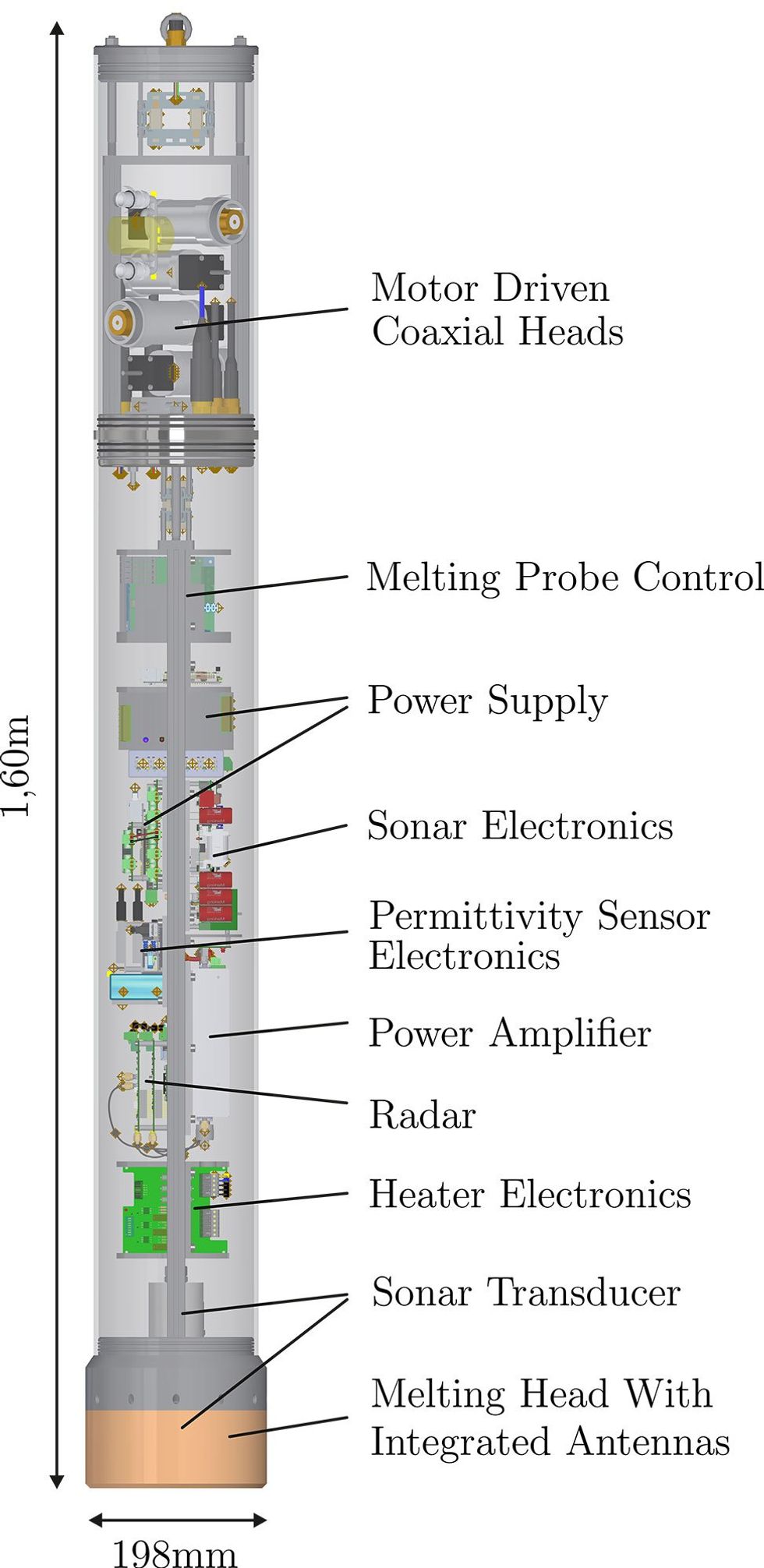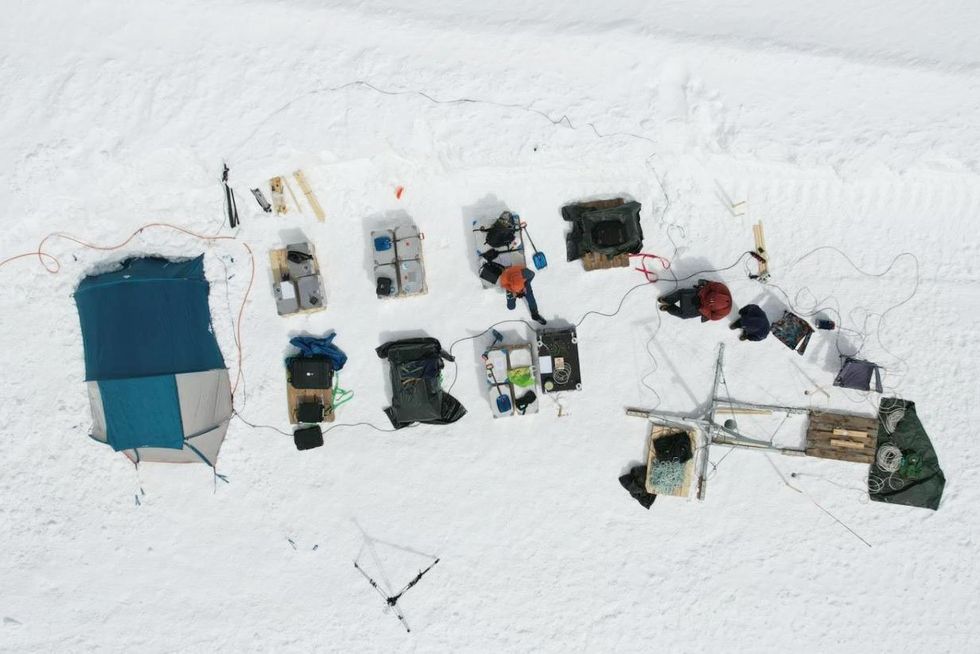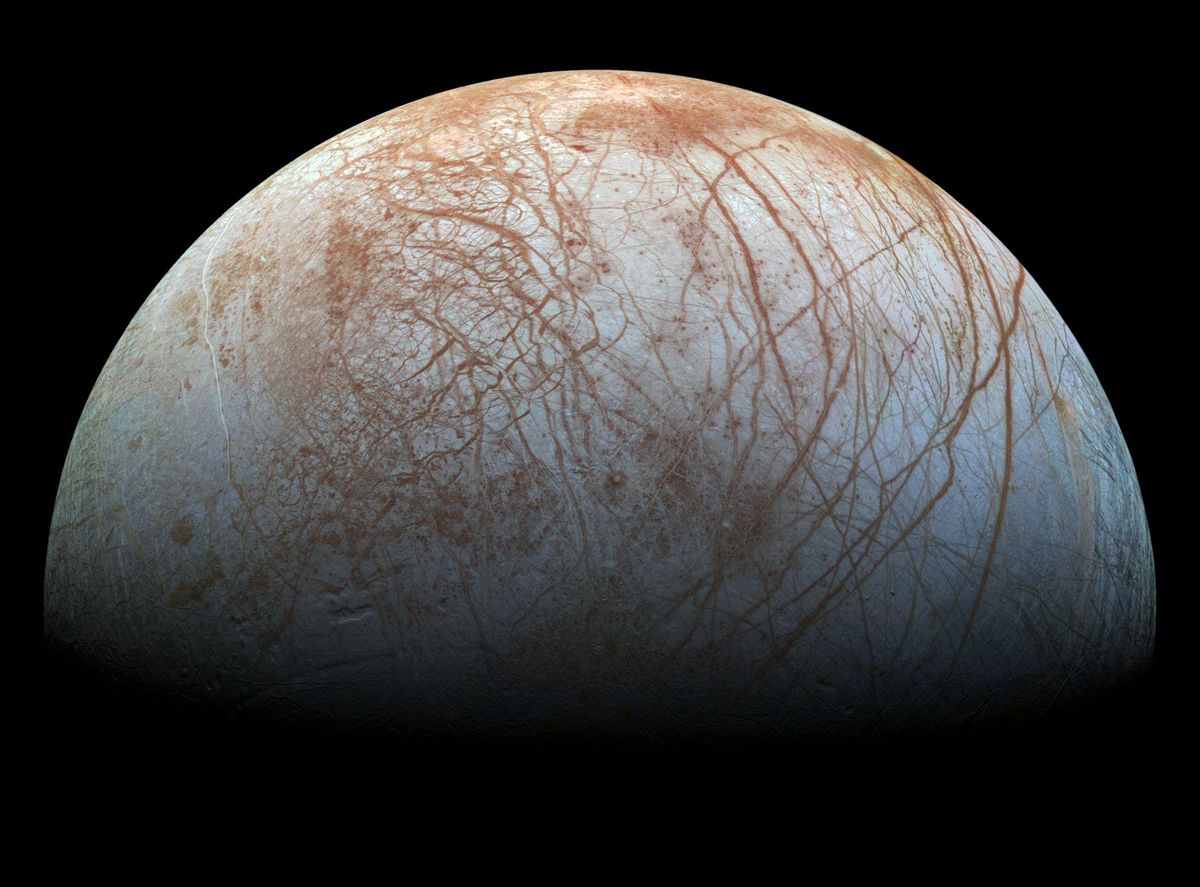This article is part of our exclusive IEEE Journal Watch series in partnership with IEEE Xplore.
Drilling down into the icy depths of Jupiter’s or Saturn’s moons could reveal one of the most sought-after prizes in astronomy: extraterrestrial life. Researchers in Germany are bringing us one step closer to the possibility of finding that prize—if it exists—with the creation of a novel subglacial probe. The new probe, which can detect objects under the ice using both sonar and radar, is described in a study published 22 January in IEEE Transactions on Geoscience and Remote Sensing.
“If you think about the existence or the development of life, you always think of water, which is why finding water is of big interest to the to the astronomical community,” says Michael Stelzig, a Ph.D. candidate at the Friedrich Alexander-Universität Erlangen-Nürnberg (FAU) in Germany, who co-led the study.
For these reasons, scientists are keen to explore under the surface of our solar system’s icy moons, which are home to subglacial bodies of water. Several space missions have done flybys of Jupiter’s and Saturn’s icy moons, such as NASA’s Cassini mission and ESA’s upcoming Juice mission, which is slated to reach Jupiter and its moons in 2031.
However, these missions can provide only preliminary evidence—through remote sensing–that extraterrestrial life is possible on these moons. For true confirmation, a future space mission will need to bring a lander that’s capable of drilling into ice to obtain a subglacial sample.

Importantly, as the probe drills down, it must avoid obstacles and debris, such as crevasses or meteorites embedded in the ice, as well as determine the distance to its target. To address this issue, Stelzig’s team has designed a novel melting probe, as part of the German Space Agency’s Technologies for Rapid Ice Penetration and subglacial Lake Exploration (TRIPLE) project.
“[The probe] is basically a metal torpedo—a drilling system—that can melt into the ice,” explains Stelzig. “But we need that drilling system to be able to see its surroundings.”
This prompted Stelzig and his colleagues to create a sensing system within their melting probe that uses both radar and sonar, each of which has advantages and disadvantages when it comes to exploring subglacial environments.
Radar is great for detecting changes in density, but its signal incurs significant losses in wet snow and ice. In contrast, sonar is great for sensing in wet environments, but the signal can lose efficiency if the system is not coupled well enough to the ice. By combining the two technologies, the researchers hope to harness the advantages of each sensing technique. The system also incorporates a permittivity sensor, which will help ensure accurate radar range gauging and gather scientific data about the ice body.
A major challenge, however, is fitting all this tech into the head of the probe, which is limited in size. Therefore, the researchers created antennas based on a special ceramic that aids in miniaturization. Thanks to the ceramic’s extremely high thermal conductivity, the antenna array in the melting head assists in both directing the radar signals and maintaining the probe’s ability to rapidly melt through the ice.
The researchers put their melting probe to the test on the surface of the Jungfraufirn glacier in Switzerland. Tests of the probe’s sonar, radar, and conductivity sensing capabilities showed proof of concept that the system works. The maximum melting speed the probe achieved was 1.88 meters per hour, with an average of 1.32 m/h over a 4-hour period.
While these preliminary findings are exciting, a lot more work needs to be done before this melting probe makes its debut on the surface of any faraway icy moon.
Stelzig says next steps include further improvements to ensure that the technology is ready for a mission, enhancing the probe’s melting speed, and integrating the probe into the overall TRIPLE system. And, of course, a new mission would need to be announced. Two likely lunar destinations for future missions are Jupiter’s Europa or Saturn’s Enceladus.
The results from ESA’s Juice mission might influence a future mission with a lander and probe, like the one designed by Stelzig’s team. “If Juice can successfully prove that Europa is habitable, then the TRIPLE system will be something that could be [used in] a future mission, which then actually tries to find life on Europa or Enceladus,” says Stelzig.

But before this technology is rocketing through space for Europa, Enceladus or any other icy moon, more tests will need to be done on Earth.
Jan Audehm is a Ph.D. candidate who was also involved in the study. He notes that once more research is done to refine the probe, his team is interested in traveling to Antarctica to conduct additional tests.
“In a region [of Antarctica], we think that there’s ice thickness of about 4 kilometers, and beneath this thick ice layer, there’s a subglacial lake. This would be a great testing environment for our TRIPLE scenario,” says Audehm.
Along with the sensing system, the probe is designed to release a small, autonomous vehicle that probes the subglacial reservoir and can further investigate points of interest, such as hydrothermal vents.
Stelzig notes that this probe could be used to not only study icy moons around faraway planets, but also understand our own planet better, for example by improving scientists’ understanding of how global ice reserves are being affected by climate change.
- No Antenna Could Survive Europa’s Brutal, Radioactive Environment—Until Now ›
- SXSW 2018: Looking For Life on Europa, Enceladus, and Titan ›
Michelle Hampson is a freelance writer based in Halifax. She frequently contributes to Spectrum's Journal Watch coverage, which highlights newsworthy studies published in IEEE journals.



